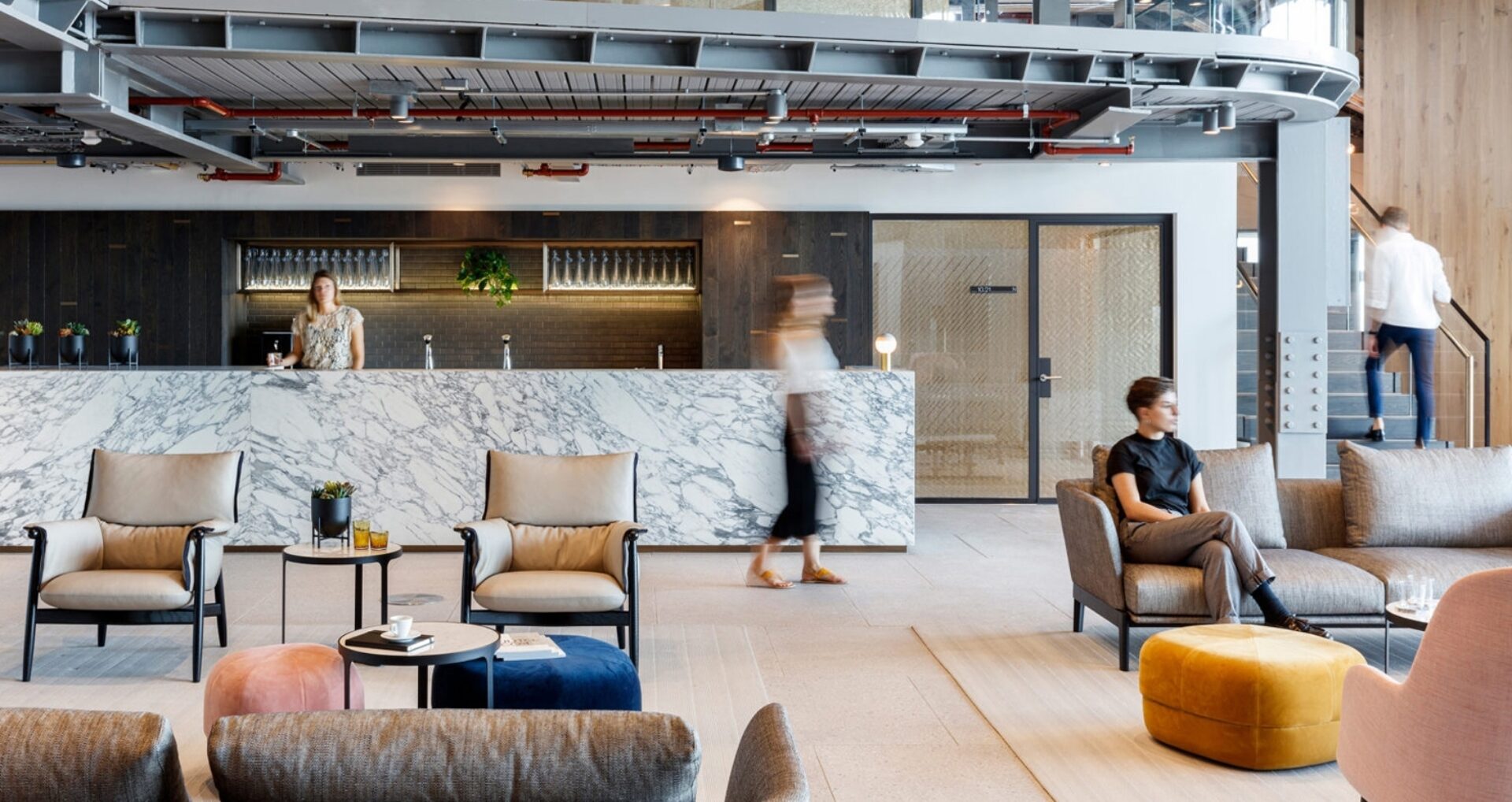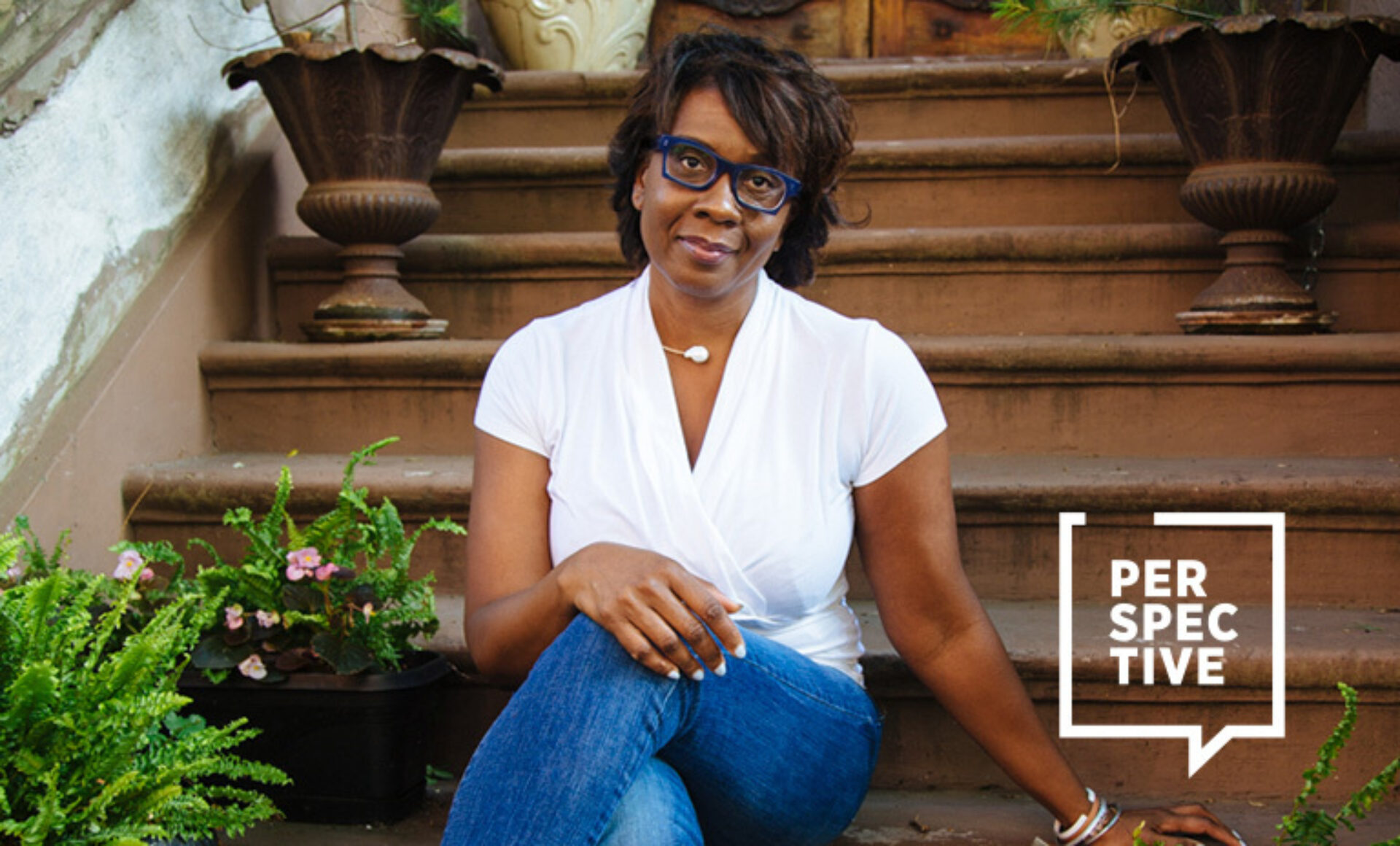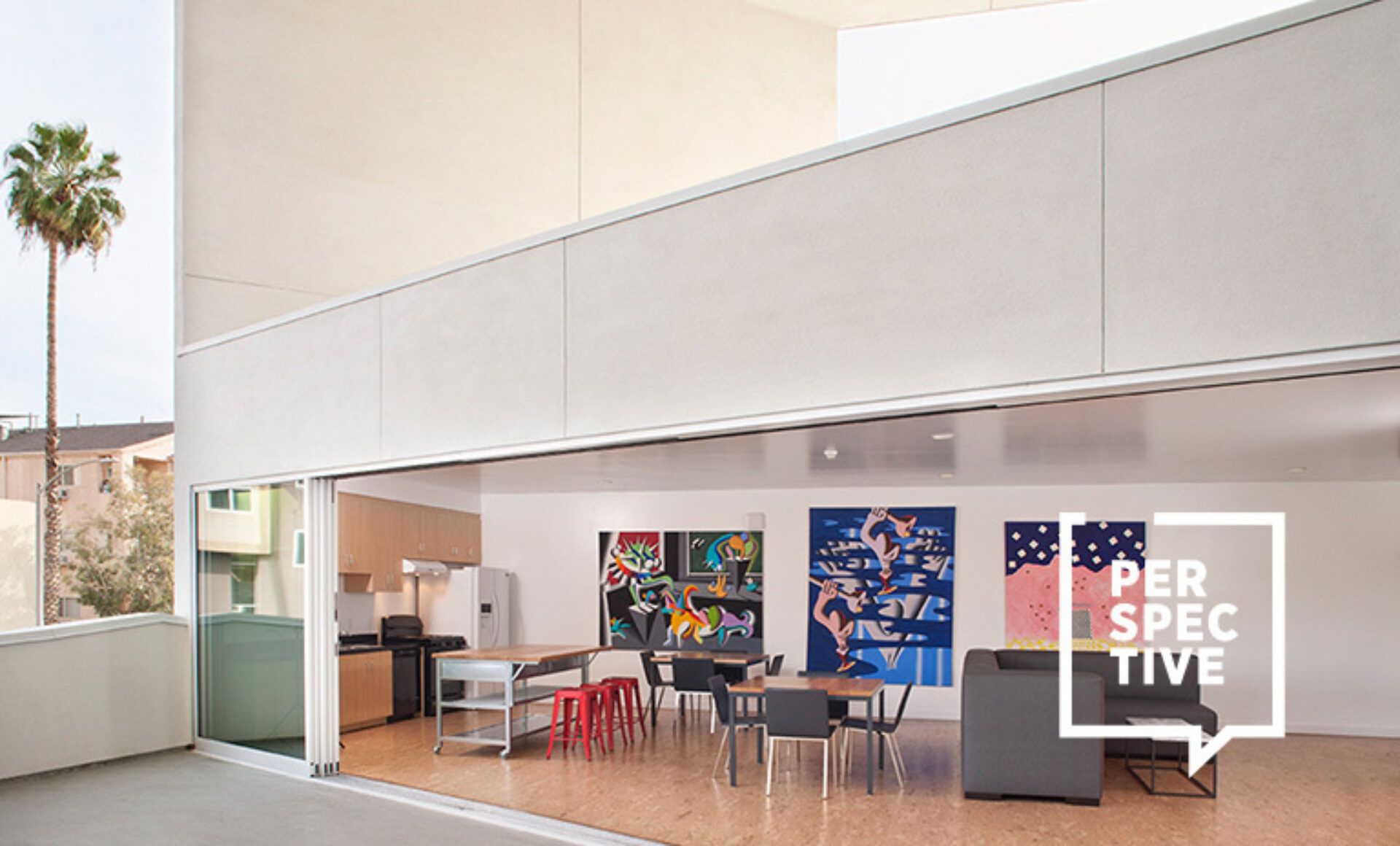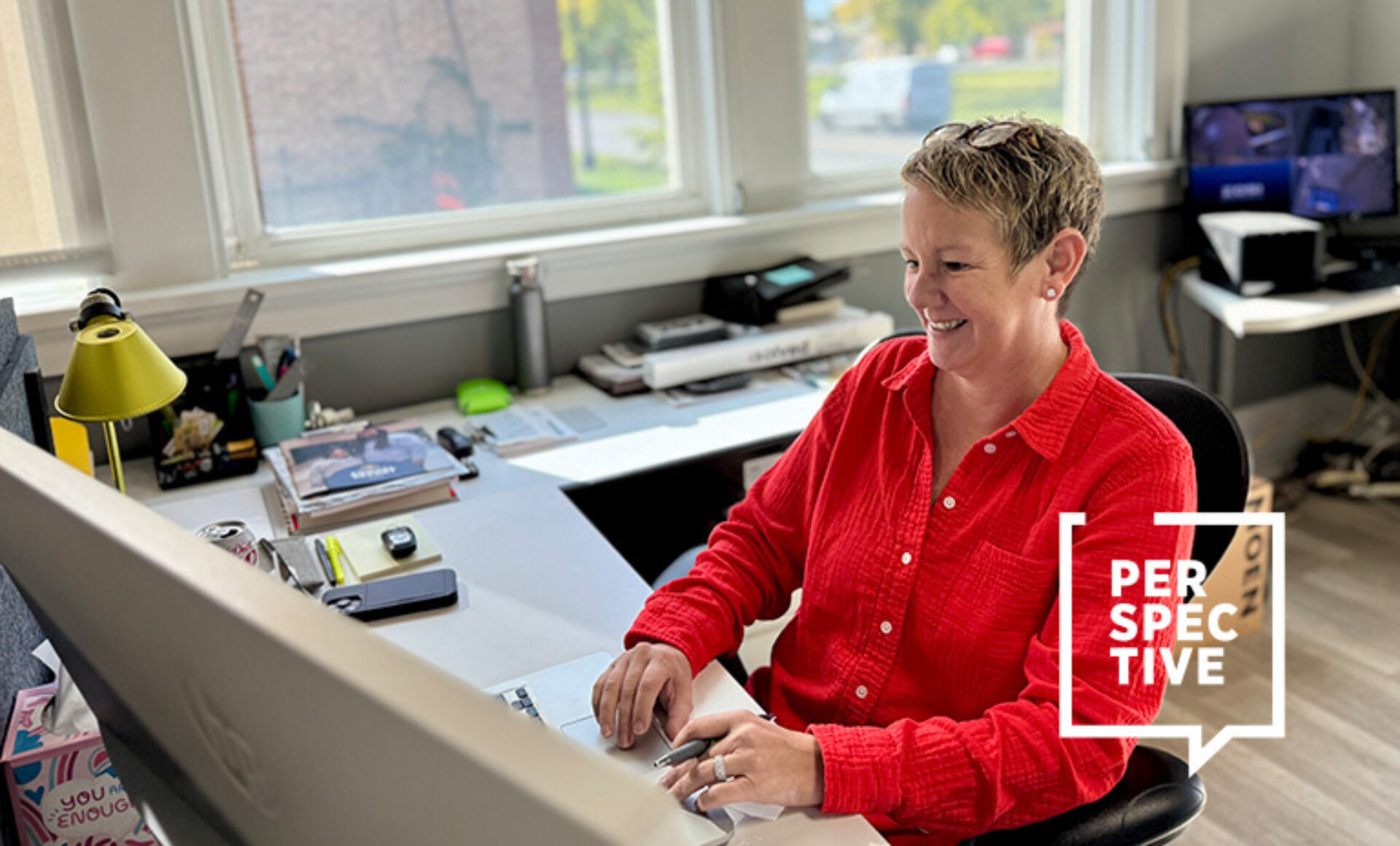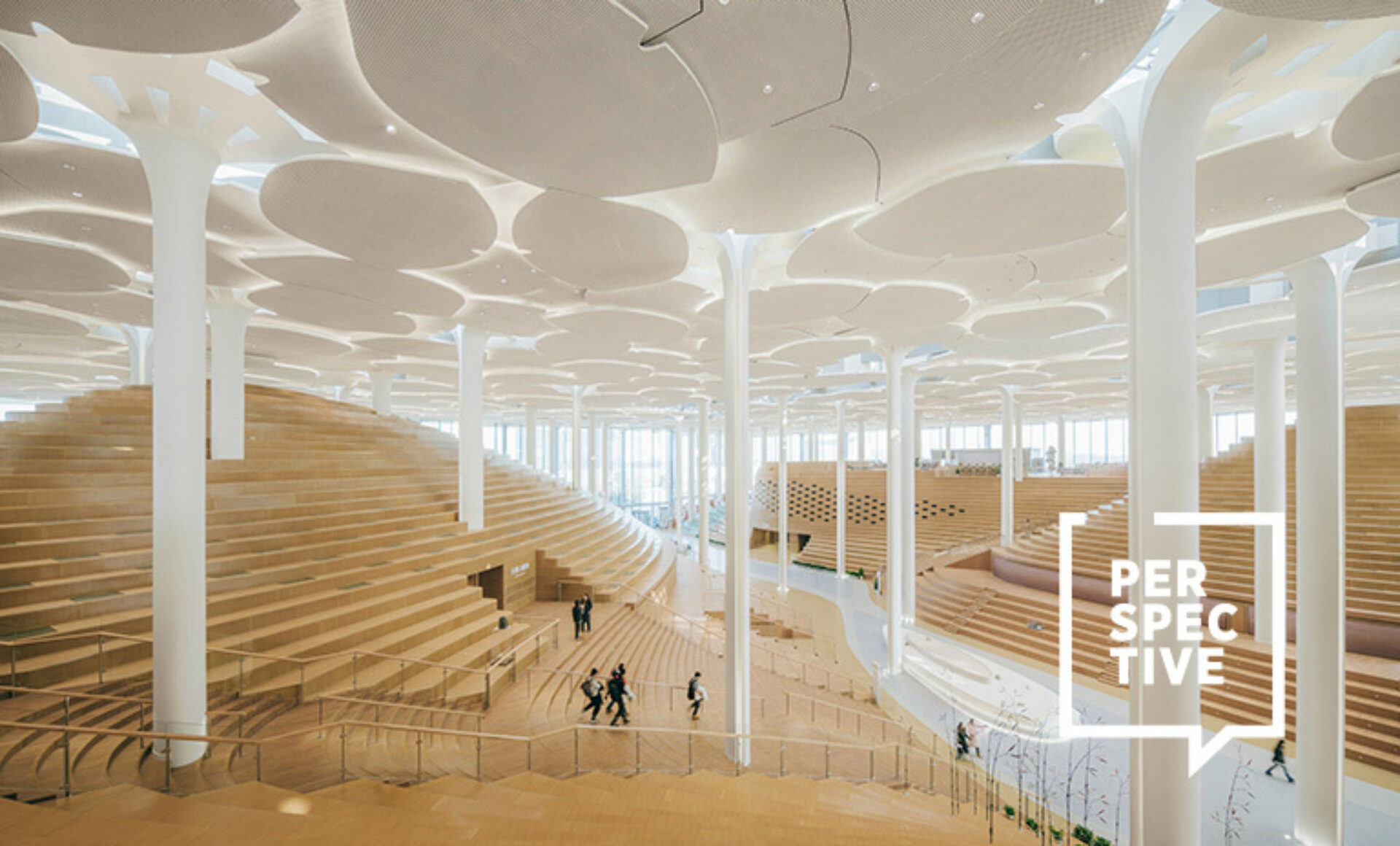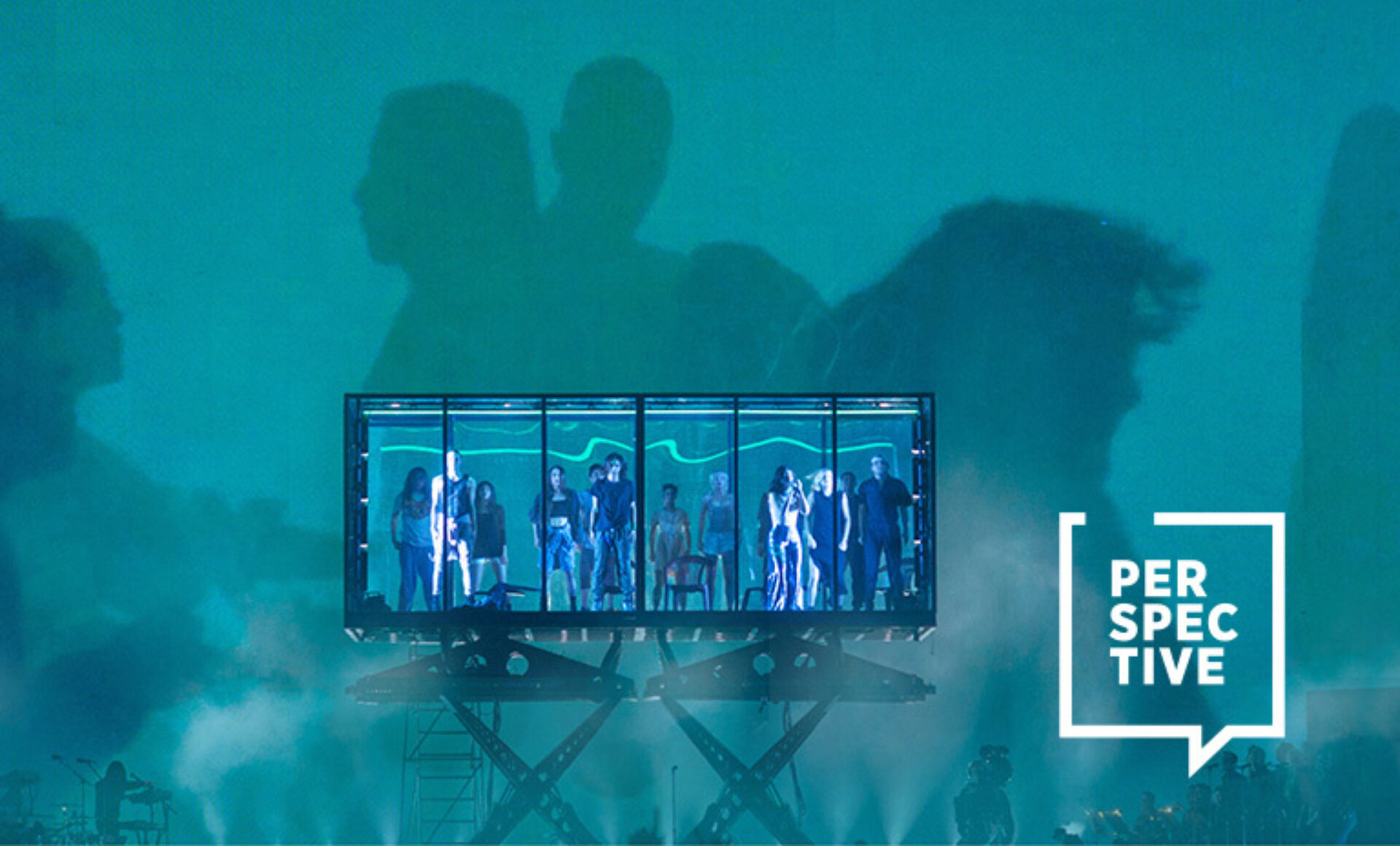As the pandemic shuttered businesses around the world, one thing was clear to Linda Morey-Burrows: “We need each other. That’s the bit people didn’t realize.”
As founder of design studio MoreySmith in London, she saw the signs. “Creativity was slipping, with us not all being together. People need a sense of place, of identity—of learning from other people.”
As Morey-Burrows says, we need each other, and not just in offices but in bars, in stores or at the game. There are a host of other places where people gather, from airports to hospitals—and they’re all are adapting to a whole new world informed by COVID.
But what will all these spaces look like in five years’ time?
It’s tough to tell what will last. Right now, most designers are in triage mode. Yet despite the uncertainty born out of the pandemic, there’s an opportunity for designers to reassess, reimagine, reinvent, and move forward.
“We listen to our clients, and we learn from that,” says Adam Stover, IIDA, senior principal and senior interior designer at Populous, Kansas City, Missouri. “If we look to the future with that lens, then we're going to be more creative, and our solutions are going to be stronger.”
Here’s what designers are seeing now—and their POV on what public spaces in four sectors might look like in 2025.
Office Space
Future state: Visible symbols of safety, with more micro-environments and biophilia
Hybrid working arrangements are here to stay for most office workers. And while it may seem counterintuitive right now, that means office spaces will need to be more sociable.“
Clients were asking whether they should take out the café from their scheme because of social distancing, but I was like, ‘No, no, no. This is going to be the reason people come back,’” Morey-Burrows explains.
That’s not to say there won’t be shifts. Expect fewer rows of desks, separate pods for video calls, and a varied “landscape” of environments, spanning vibrant kitchen areas to libraries, allowing each worker to find their in-office sweet spot.
Morey-Burrows points to her own recently expanded office space as a future-forward lab of sorts. More domestic in its aesthetics, it features a planted courtyard and “a sort of labyrinth of different spaces that you can be self-contained in, even though it’s open.”
But it’s not all about spatial planning. Designers are also incorporating features aimed at aiding in disease control. From sensor taps to microbial surfaces, it will be just as important that the interiors of the future project a perception of safety.
One other big change: integrating the great outdoors, “almost as an extension of the workplace,” Morey-Burrows adds. “People are going to want to have more connection to nature.”

Hospitality
Future State: Innovation that can flex to the need at hand
Switching to antimicrobial surfaces and reducing touchpoints were quick fixes in hospitality spaces like stadia and large event spaces. Yet while elements like hands-free toilets and cashless retail are likely to become the norm, Populous’ Stover wonders whether every solution is necessarily a design solution.“
Rather than switching out a material, is it actually more cleaning we need to do? Instead of spending money to replace the hardware on a door or adding a sensor, maybe we hire a greeter to hold the door open? That eliminates touchpoints and improves the fan experience,” he says.
"One thing is certain: Stadia need to become more adaptable—able to scale up or cut back the number of guests on site, without sacrificing the community people are looking for," says Stover. “Say we have another pandemic, or we take a step backwards. The design has to be flexible enough to adapt our spaces and then transition back.”
Wayfinding and signage also need to be flexible, so if safety or social distancing messages need to be communicated, they can be seamlessly adapted.
Healthcare
Future State: Flexibility—with a friendly push from technology
The ability to adapt has been a mainstay on the clinical side of hospitals. Now—and into the future—designers will need to look at more innovative ways for larger public spaces to “flex into different functions,” says Amy Mays, IIDA, interior design director at HDR Inc. in New York City. “Creative, adaptable furniture solutions will continue to be something that designers crave for these challenges.”
Technology will also be front and center for health care teams.
“There were several projects our team was in the midst of designing when COVID-19 hit, and these clients were asking us to think about how patient registration/check-in might work differently,” she says. “Technology really came forward in these conversations as the pressure of COVID propelled the shift of how and when organizations think about using technology or digital engagement.”
That push for innovation isn’t going unnoticed by other industries.
“Transportation and aviation are two sectors in particular that are interested in how we approach thinking for healthcare environments,” she says. “There has been a great deal of conversation around how people can flow in a one-way manner, rather than back-tracking through spaces.”
Retail
Future State: Digitally loaded shopping spaces that are safe—and enticing.
The pandemic has been “devastating” to airport retail, and it’s going to take ultra-innovative digital solutions to lure shoppers back in," says Nick Taylor, director of design at The Design Solution, London.
Shoppers want to minimize time spent in-store so the quality of the experience must intensify to attract them,” he says. “Their mindset will focus on their exit strategy, by which I mean they need to see a clear, safe space at the payment points, an emphasis on touch-free payment, and minimal interaction with staff—all of which could require greater floorspace.”
For Taylor, it isn’t about reducing customer interactions. It’s about making their interactions with staff more meaningful and deliberate. Think expanded personal shopper and concierge-style services, he said. Changi Airport in Singapore, for example, introduced new walk-up service in its transit holding areas, “enabling cautious shoppers to avoid entering the store all together.”
Taylor predicts those kind of digitally fueled interaction will only increase. Customers might link to products via digital displays, order and pay by phone, and even collect at a separate point. “This format could be advanced by creating digital portals so that customers can browse products in a virtual environment, such as enclosed/shielded experiential pods,” he says. “This would be their very own digital store, giving them a personalized experience in their own exclusive, safe space.”
